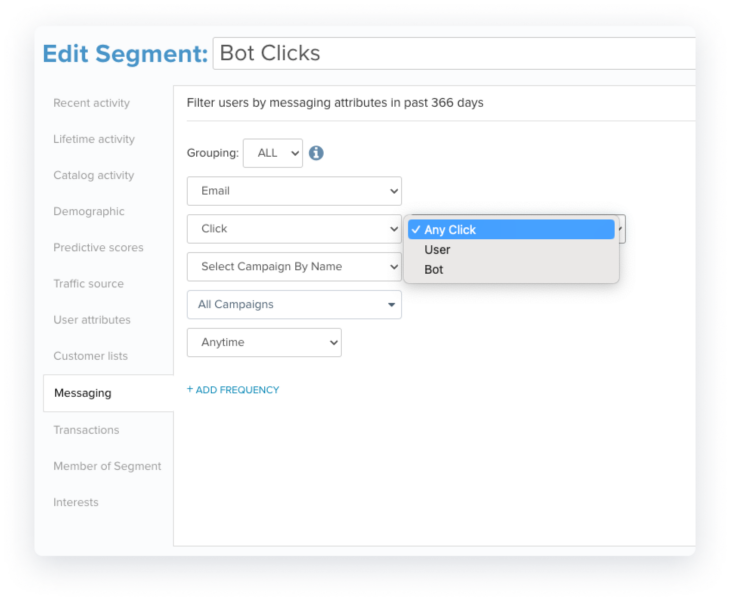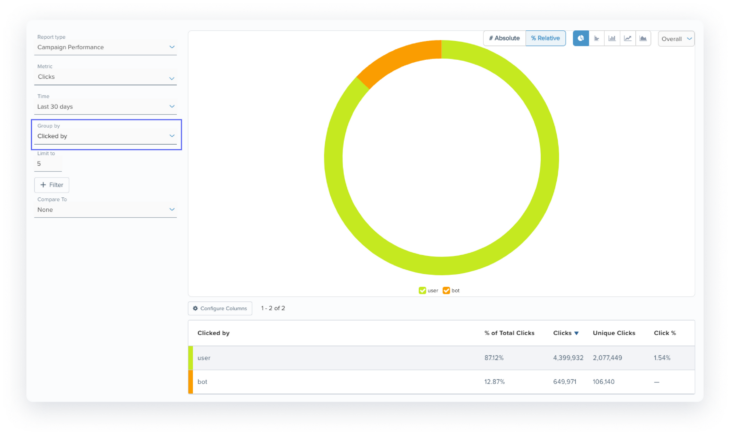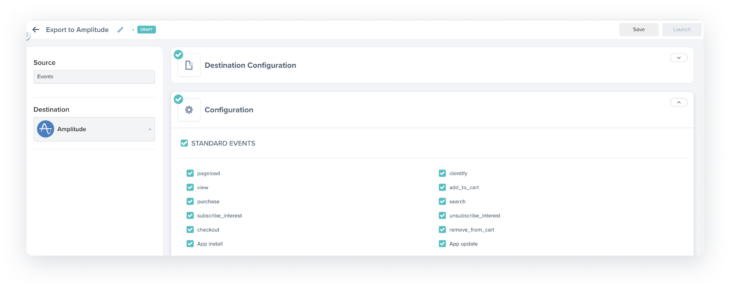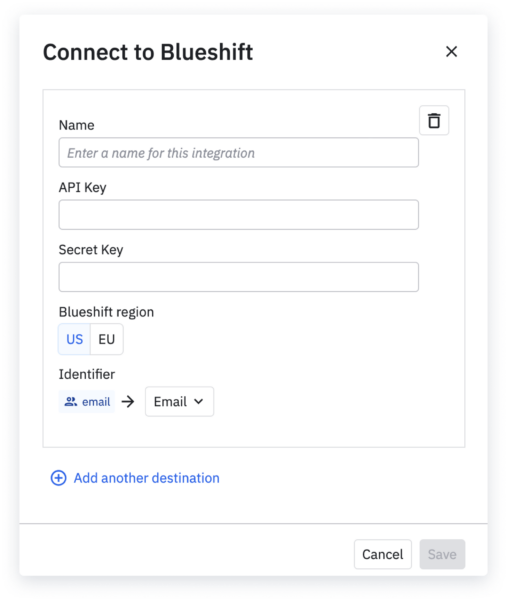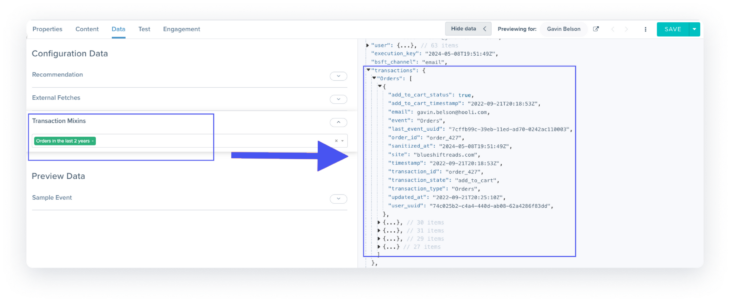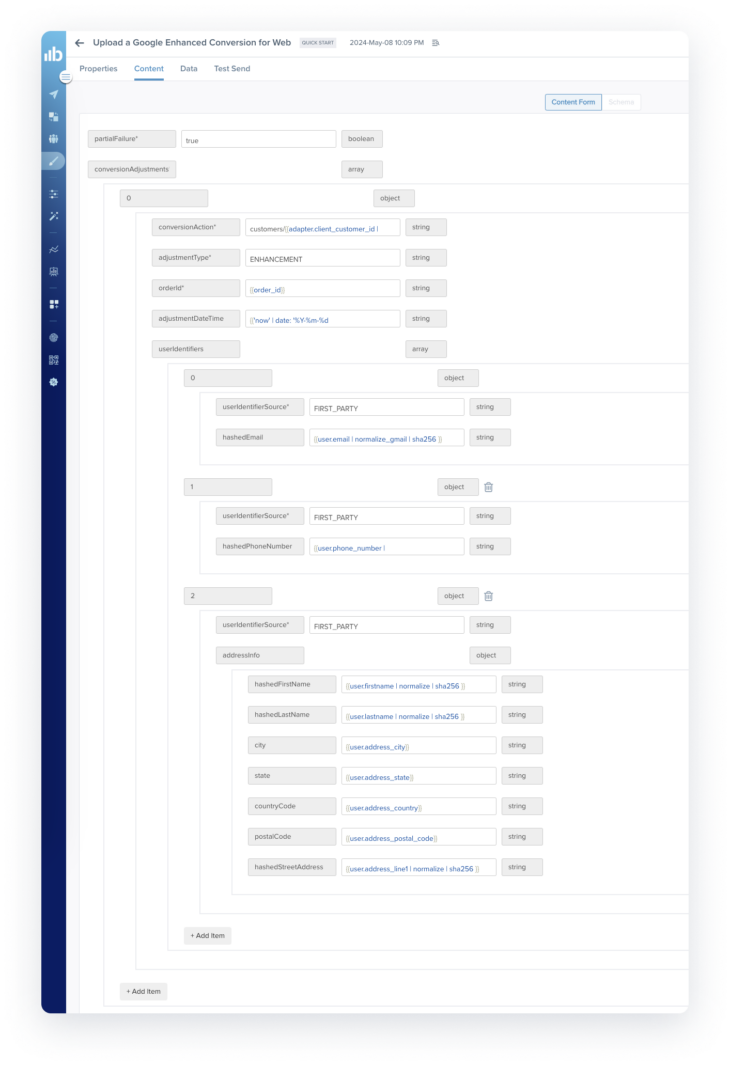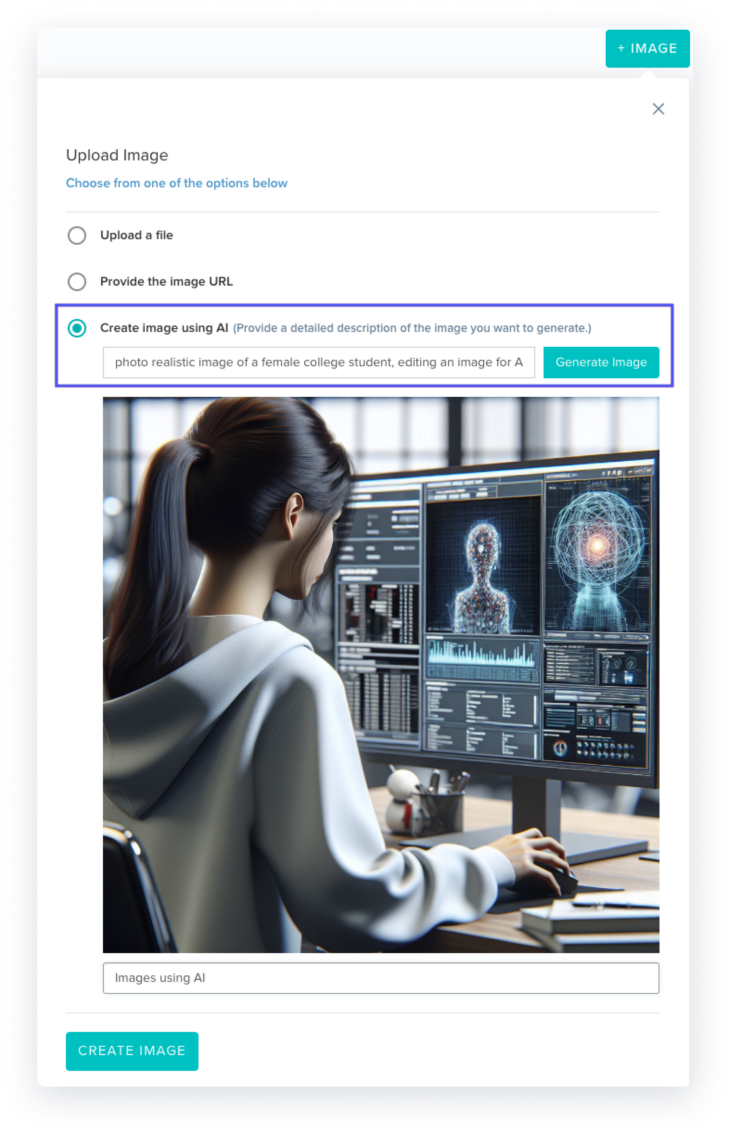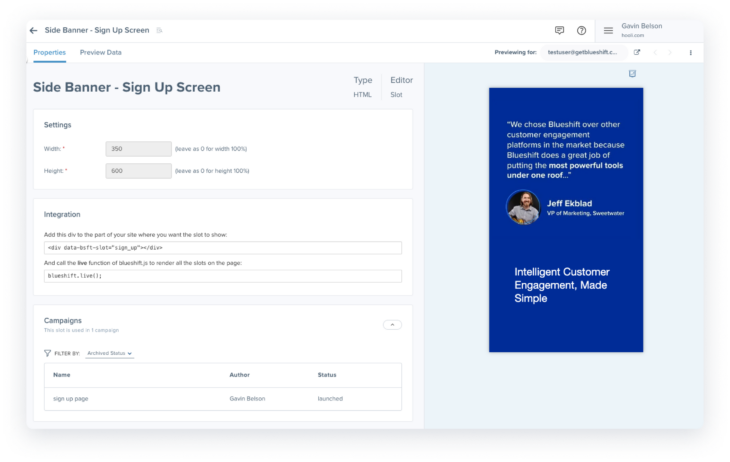We’re introducing yet another set of enhancements and brand-new features this month, all designed to provide you with advanced tools to optimize campaigns, streamline data management, and drive user engagement with our AI marketing platform.
05.15.24
May Updates
[BETA] Bot Click Filtering
Reporting accurate campaign results is crucial for every marketer and, ultimately, for their business. To combat the security risks posed by malicious messages, organizations run security applications that programmatically scan the contents of incoming messages as well as click on embedded links to check for suspicious content. However, a drawback of these security measures is that they lead to synthetic (or bot) clicks, which artificially inflate engagement metrics in marketing campaigns.
To address this common problem, we’re excited to announce the beta rollout of our bot click filtering functionality. This innovative feature enables you to estimate the impact of synthetic or ‘bot’ clicks, providing you with clear insights into the nature of engagement with your campaigns.
Using CloudFlare’s Enterprise Bot Management module, we score incoming clicks based on the likelihood of them being generated by a ‘bot’ or a real human user. We flag any click event with a score less than 30 as a potential ‘bot. You can view and act on this information in the following ways:’.
- Campaign Activity Reports: You will now see a ‘clicked_by’ attribute under ‘extended_attributes’ in your campaign activity reports. This attribute will have a value = ‘bot’ or ‘user’ depending on the estimated source of the activity
- Custom Reports: When you create a ‘campaign performance’ report using our Insights feature, you will see an option to group and filter ‘clicks’ by a ‘clicked_by’ attribute. This attribute will have values = ‘bot’ or ‘user’
- Segmentation: When you segment on a user’s messaging activity, you will now be able to segment ‘click events’ by the ‘clicked_by’ attribute
If you’d like to test this feature, please get in touch with your CSM. Kindly note that:
- This feature will not filter out (i.e., remove) any raw campaign activity data that we receive from your users. As described above, we will process them and flag them as bots or humans.
- Scoring and flagging of potential bot activity will begin once this feature is enabled for your account, providing actionable insights moving forward.
- Once enabled, bot clicks will be excluded from contributing to engagement signals used for evaluating features like Engage Time Optimization or predictive scoring
The Blueshift Amplitude Integration
Amplitude is a leading digital analytics platform that helps companies deliver better product experiences by capturing data they can trust, uncovering clear insights about customer behavior, and helping them take faster action. You can now experience the combined power of Amplitude and Blueshift with our bi-directional integration.
Amplitude event exports
This no-code integration minimizes the infrastructure set up required by your development team. Instead of having to add support for sending event data for each destination (i.e. Blueshift and Amplitude), the development team can reduce their workload by only adding support for sending event data to Blueshift. Once the data is in Blueshift, you can choose to send all or a part of it to Amplitude via a simple and intuitive UI.
It also provides cleaner data management by maintaining a single source of truth and eliminating the need to maintain multiple integrations on your website or app. Leveraging this integration, you can send standard and custom events from your Blueshift account to your Amplitude account in real-time. You can then use this real-time event data to run advanced analytics and derive insights into how customers interact with your website or apps.
Amplitude Cohort Sync
With the Amplitude Cohort sync, you can derive customer insights by applying analytics on various user journeys across several marketing channels. For instance, you can perform a funnel analysis of the users who visited your app but did not make a purchase. Similarly, If you observe any interesting activity pattern on your app or website from a group of users using Amplitude, you can easily sync the user data with Blueshift to act on it accordingly.
The integration will enable you to easily sync user cohorts created in Amplitude to your Blueshift account as customer lists. You can also set up recurring syncs from Amplitude to keep your cohorts in Blueshift updated. These cohorts can be activated through Blueshift’s cross-channel engagement capabilities or through Blueshift Audience sync to various destinations. The robust integration eliminates the need to create the same cohorts twice or the requirement for an external data pipeline to bring your cohorts into Blueshift.
Historical Transaction Information in Messages
To keep customers informed, you need to understand their actions and associated events. Transaction Modeling, an advanced Blueshift capability, allows you to connect and segment users’ lifecycle events that are connected via a common identifier. As a marketers, this helps you efficiently manage transactions with multiple associated events, such as hotel bookings. For example, you can use transactions to model a user’s ‘order’ journey (e.g. add to cart, purchase, shipped, delivered), booking journey (e.g. book, check-in, check-out) etc.
With Blueshift’s ‘transaction’ feature, you already have the ability to pull up information from all related events when messaging the user in the context of an activity. We are further enhancing the transactions model feature so that you can now include a user’s historical transactions that may be outside the context of their activity. For example, suppose you are notifying a user about an upcoming subscription renewal. In that case, you can also include details of other subscriptions they currently have or a history of their past subscriptions.
To use this feature:
- First, create a ‘transaction mixin’ using our advanced segment builder. Here, you will define the criteria for the transaction records you want to include in your message. For example, you could pull up ‘subscriptions which were renewed in the last six months’ or ‘all subscriptions where payment is pending.’
- Next, include this ‘transaction mixin’ in your creative template under the ‘Data’ tab.
- You can then use any content from the transaction records using Liquid syntax.
Note
- If you use multiple ‘transaction mixins’ in a template, for example, a mixin targeting ‘orders’ and another targeting ‘subscriptions,’ you will have access to transaction records from both the mixins, i.e., both ‘orders’ and ‘subscriptions.’ In other words, an ‘OR’ logic would be used to combine results across all the transaction mixins used in a template.
- You can use up to 10 mixins in a template, and you will have access to up to 300 transaction records for any customer in a message.
Filter By Campaign Tags in Journey Builder
To help you reduce error and save time when building and maintaining workflows, we’ve introduced a new enhancement in Journey Builder: filtering by campaign tags. Now, when filtering customers by messaging activity, you will -have the option to target all customers who interacted with campaigns that had certain tags. You will no longer need to select each relevant campaign individually by name.
To use this feature, simply use the ‘Messaging Attributes’ filter in a trigger. You will now see an option to select campaigns by name or by tag. Simply select the latter option to take advantage of this functionality. The experience should be very similar to segmenting customers’ campaign engagement activity using campaign tags.
Enhanced Conversions for Google Ads
Google Ads has made it easier for you to report conversion data. Instead of sending the hashed customer information when the customer converts, the new Google tag requires just the GCLID and the order ID. You can then upload the order ID along with the hashed data later to send the hashed customer information to Google Ads.
To help you take advantage of these new developments from Google, we have added two quick-start templates so that you can easily report your conversion data from Blueshift to Google Ads. When you set up the Google Offline Conversions app for your account, you will now see the following quick-start templates:
- Upload a Google Offline Conversion
- Upload a Googled Enhanced Conversion for Web [NEW] – To get started with enhanced conversion for Web. (Refer to screenshot)
- Upload a Google Enhanced Conversion for Leads [NEW] – To get started with enhanced conversion for leads
Get started easily by following the steps below:
- Set up the Google Offline Conversion app for your account using your Google Ads credentials
- Clone or directly use the quick-start template that’s appropriate for your needs.
- Include the appropriate event (= your conversion event) in the template’s ‘Data’ tab to preview the event context
- Replace the ‘order_id’ field in the template with the appropriate transaction ID that you configured in the Google tag
- Set up and launch an event-triggered campaign that uses the above conversion event and the template
That’s all you’ll need to report your conversion data to Google Ads.
Create Images Using Generative AI
You can take advantage of generative AI to create beautiful images for your marketing campaigns from just a text prompt. Blueshift uses DALLE-3 to generate images.
To get started, simply click on the +IMAGE button on the ‘Images’ index screen and select ‘Create image using AI. ‘
Live Content Slot Upgrade
We’ve upgraded the Live Content Slot editor to offer the same best-in-class experience as other creative studios. This familiar interface reduces the learning curve for you and your team. Additionally, it enhances intuitiveness, making it easier for you to view and manage different campaigns using a slot.
Shopify Inventory Tracking and Event Payload Enhancements
The Blueshift + Shopify integration enables you to activate customer data across all marketing channels. We are enhancing our existing integration with Shopify to ensure data consistency between these platforms and allow a greater personalization of your campaigns.
- Blueshift will now honor the ‘Do not track’ and ‘Continue selling after out of stock’ inventory settings from Shopify, allowing you to keep inventory availability in sync between Shopify and Blueshift seamlessly.
- You can now whitelist additional event attributes available from Shopify events in Blueshift. You can leverage these additional attributes to create richer customer profiles and power a greater degree of personalization in your campaigns.
Please get in touch with your CSM to enable these enhanced features for your Shopify integration.
Individual Rate Limits For Each External Fetch
The ‘External Fetch’ functionality allows marketers to use content from third-party service providers or external sources in their messages. This enables the delivery of dynamic content that is fetched “just in time” when sending a message.
This new enhancement will enable you to set up different rate limits for each external fetch template. If the API endpoint in the external fetch template cannot support the request volume to match your campaign throughput, please reach out to support@blueshift.com. Include the details of the rate limits for the API endpoint. We will update the external fetch configuration for you such that the throughput does not exceed your specified rate limit.
Please remember that setting a lower rate limit for your external fetch template will lower your campaign throughput as well.
Custom Webhook for One-Click Unsubscribe
Earlier this year, we launched one-click unsubscribes to help you comply with requirements from email clients like Gmail. With this new feature, we are also providing you the option to configure a custom webhook to relay the one-click unsubscribe events to an API endpoint of your choice. Blueshift will continue to process the one-click unsubscribe requests from customers right away. If you configure a one-click unsubscribe webhook, Blueshift will also report this information to that API endpoint.
This webhook will be used in addition to the existing webhook to report all campaign activity data. So, you could potentially have two endpoints set up —one to receive all campaign activity data and another to receive only one-click unsubscribe data. Please reach out to support@blueshift.com to get this set up for your account.
